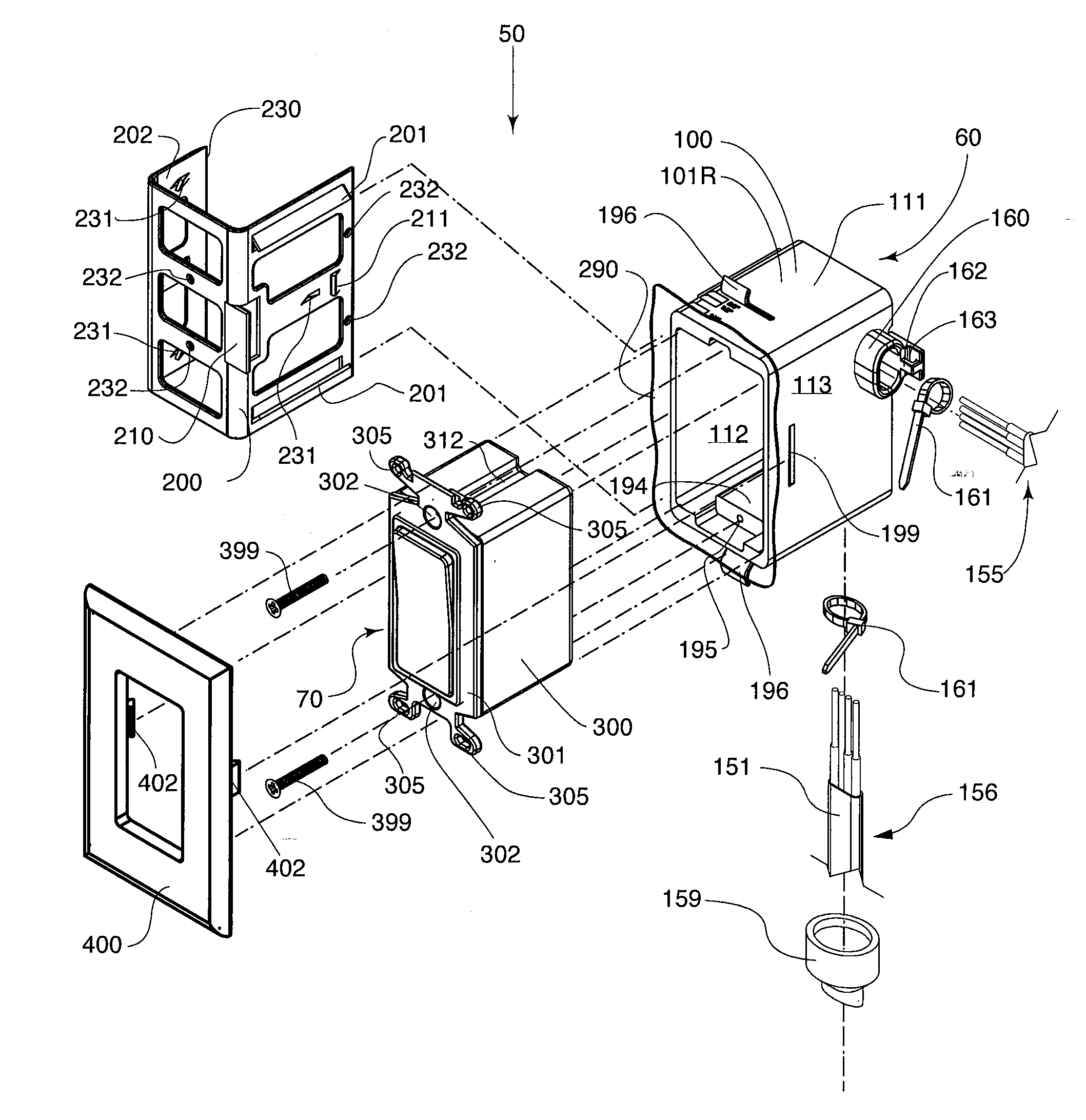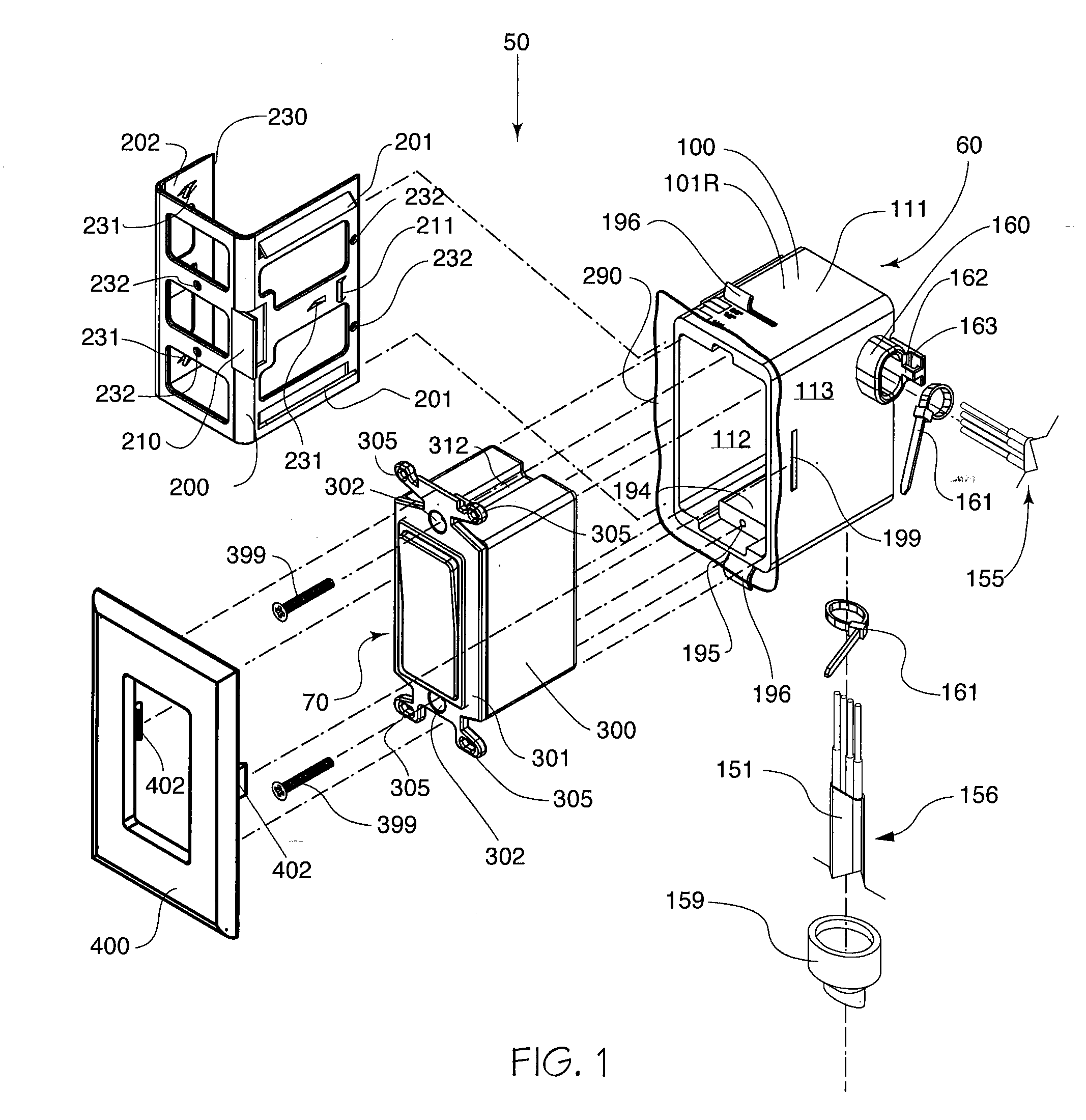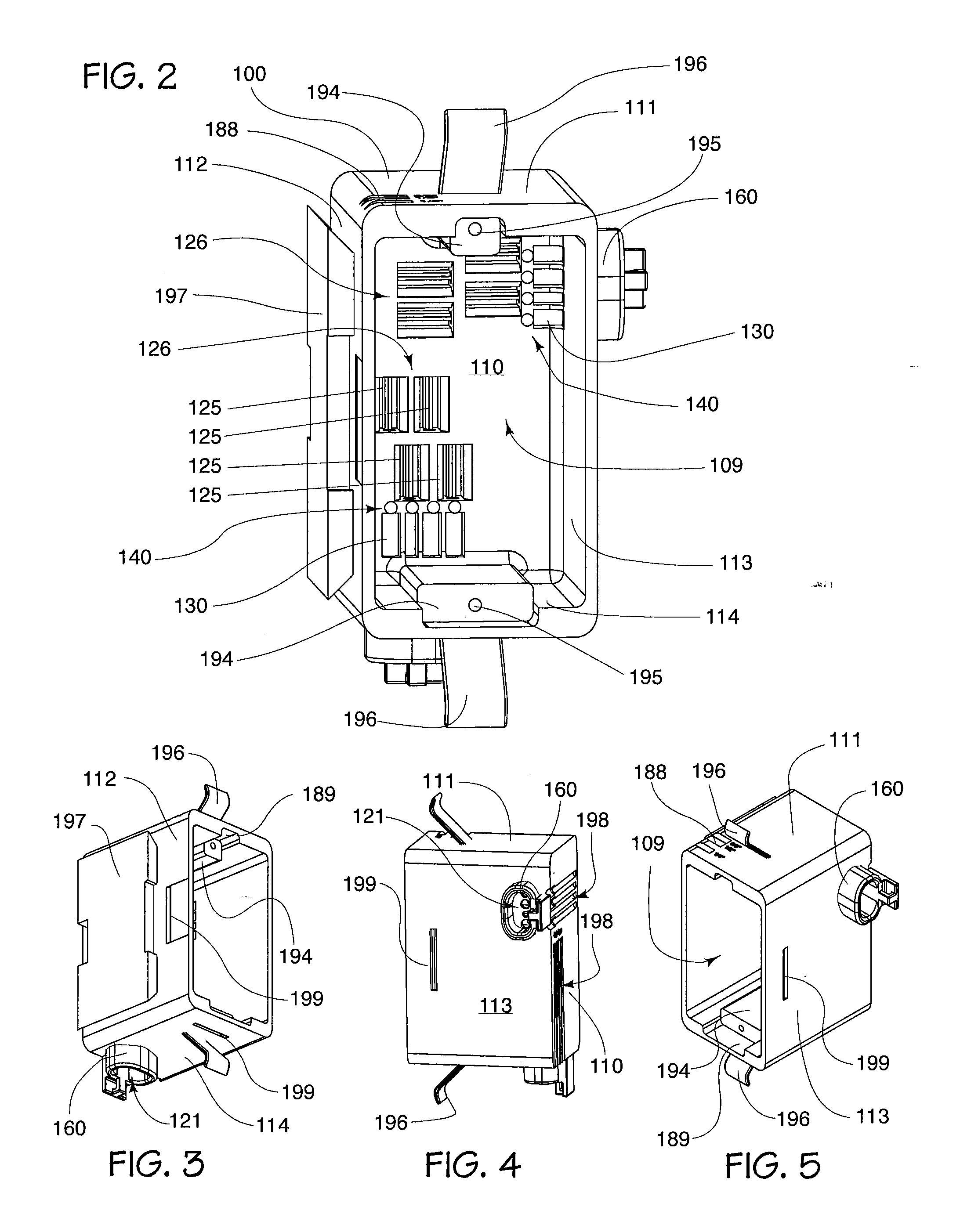This multiplicity has produced a wide variety of connection
standardization issues.
These issues are compounded by the requirement that many of these components must be wired in several different ways, even within the same circuit, to produce a specific desired outcome.
This diverse conglomeration of wiring schemes and connection methods adds to the complexity of industry
standardization issues.
Previously this lack of connection standardization would increase the probability of wiring errors in the field.
Knowledge of code requirements and best practice procedures tend to differ widely between installers, thus producing inconsistent results and errors.
These wiring errors range from burdensome inconveniences to life threatening safety issues.
Even minor field wiring errors would
impact both the safety and the profitability of every job.
Hand wiring requires the expensive services of electricians utilizing procedures that differ only slightly from the procedures in use for over fifty years.
Hand wiring is extremely time-consuming and since the hourly wage of electricians is among the highest of all craftsmen, the cost of installing the electrical
distribution system in a building represents a substantial portion of the total building cost.
This problem has been partially solved by the implementation of some
specific function devices, but these devices still have significant problems and all of them fail to address the needs of the entire industry.
In addition, all previous attempts to invent pre-wired junction boxes have been complicated and expensive, as exemplified in U.S. Pat. Nos. 6,201,186; 5,525,754; 4,336,418; and 4,165,443.
Previously the number of connections that had to be made and housed within the box determined the interior size of the electrical box, compounding the complexity of industry standardization issues.
Over time, this
scrap would equate to a considerable expense, considering the amount of connections required during a typical construction project and the ever rising cost of
copper.
While wire nuts work well when joining two like wires, they are less reliable and more difficult to use in joining wires of differing gauges and construction.
This was a significant cost in time and materials.
Previously connections that were sound in a static condition would often become compromised when the wires were twisted, turned, and compressed into their electrical box.
Those compromised connections would commonly fail and tend to go unnoticed until electrical power was established.
This added step would come at a cost of both time and resources.
It was not practical, from a time and resources point of view, to inspect each electrical box for correct and sound wiring connections.
In fact, the process of pulling a switch from its electrical box for inspection and then replacing it could, in itself, be the cause of a connection failure.
Previously the interior of the connection boxes and all wires within could become contaminated by sheetrock material, dust, and other construction debris.
The wires would become contaminated further by overspray when the wall texture was sprayed on the walls and yet again when the paint was sprayed or rolled onto the walls and ceilings.
This would result in a significant amount of time being spent by the electrician to clean out the electrical box, as well as each individual wire in the box.
Previously, once the sheetrock was in place, the electrician would not be able to visually identify which wire would lead to which location.
This was
time consuming and a daunting task for less experienced installers.
Previously, both the professional and amateur electrician often experienced difficulty in connecting devices with stranded wire leads to
solid stiff wire leads.
These interconnections commonly failed as the wires were compressed and forced into the
confined space of a traditional electrical box.
Previously a common problem would present itself when the electrical box was not properly secured to its respective supporting stud or other support.
In addition, secure electrical boxes often become loose when their respective electrical wires were pushed, pulled, twisted, and compressed within the box.
Another common problem presented itself when the secure fit of an electrical box was compromised during the sheetrock process.
They can be knocked askew and become less secure in the process.
Proper stabilization of the now compromised electrical box would typically require removal of the sheetrock, greatly disfiguring the area around the box, and is very labor-intensive and
time consuming.
Unfortunately, this has given rise to a common
field practice whereby the electrician will attempt to semi-secure the electrical box by simply compressing the sheetrock between the switch head and the electrical box and then covering the evidence of a code violation with the faceplate.
While this method is less desirable, it is quick and prevents the removal of the sheetrock to reattach the electrical box.
Previously another problem was manifested when an electrical box was attached to the supporting stud too far back into the wall cavity, thus leaving an unacceptable space between the electrical box and the faceplate.
While this was not as dangerous as the previous example, it was visually unappealing for the
end user.
This action would further compromise the security of the electrical box and could damage the wire and components housed within the electrical box.
Electrical connections were often compromised as the switches were shoved and twisted within the electrical box while seeking this proper alignment.
A quad-switch electrical box would typically require eight small screws to secure it into position, requiring the cost of the screws and the cost of the electrician's time to align the switches and screw in the screws.
An error could result in physical harm.
However, these prior art devices are typically
application specific and can actually make the installers job more complex and, at times, more confusing.
The electrical boxes from all of these patents have, among other things, multiple internal parts comprising sandwiched
bus bar or
bus plate assemblies with insulating spacers, thus requiring an increased cost and significant manufacturing and
assembly requirements.
By way of non-limiting example, they only support a limited number of
electrical devices specifically designed to fit their unique electrical box, and / or exclude many other devices currently under production by manufacturers around the world.
 Login to View More
Login to View More  Login to View More
Login to View More 


